The first Indian ascent of Kullu Makalu
An Indian team of the South Calcutta Trekkers Association, from Kolkata, made an attempt to Kullu Makalu (6349 meters, 32°06'22" N, 77°40'57" E) and Rubal Kang (6150 meters, 32°06'03" N, 77°40'35" E) in June 2023 and succeeded to summit both the peaks and eventually reported to be the first Indian ascent of the peak Kullu Makalu.
On 24th June 2023, Rajsekhar Maity (47), Pradip Bar (39), Phurba Sherpa (41), Lopsang Sherpa (30), Dawa Sherpa, Bire Tamang reached the summit of Kullu Makalu (6349m). Subhajit Banerjee (31) and Dawa Sherpa reached the summit of Rubal Kang (6150m) on 23rd June 2023
The leader of the expedition team, Rajsekhar Maity talks to Dream Wanderlust. He says, "we, at SCTA, organize expeditions keeping clear objectives in vision - to get off the beaten track and to develop a culture of technical climbing. This particular expedition aimed at challenging ourselves with an unresolved complex technical problem, discarding the temptation of certainty and easy success, along with an objective of building and nurturing a team of next-generation climbers"
Kullu Makalu, also known as ‘Lal Qila’, stands at the head of the remote Westward branch of the Dibibokri glacier in the Kullu valley of Himachal Pradesh. It’s a near-vertical rock wall of 3100 feet that ends up in a huge overhang guarding the summit. There has been only one recorded climb on this mountain, by an Italian team in 1961. All subsequent attempts failed, including a few from Bengal in the recent past. SCTA also attempted last year but returned from 575 feet below the summit. The peak remained unclimbed for 61 long years.
"An almost-virgin peak like Kulu Makalu (the only ascent of 1961 did not have any photographic or elaborative documentation), needs detailed route study, application of technical knowledge in route selection, meticulous planning, patience, and perseverance, other than climbing skill. Ticking all of the above boxes brought us success. On the other hand, Rubal Kang, battling with knee-deep snow for 10 days, offered the new climbers excellent exposure and a good test of endurance," Rajshekhar added.
The Leader of the expedition team has sent us a report which is given below.
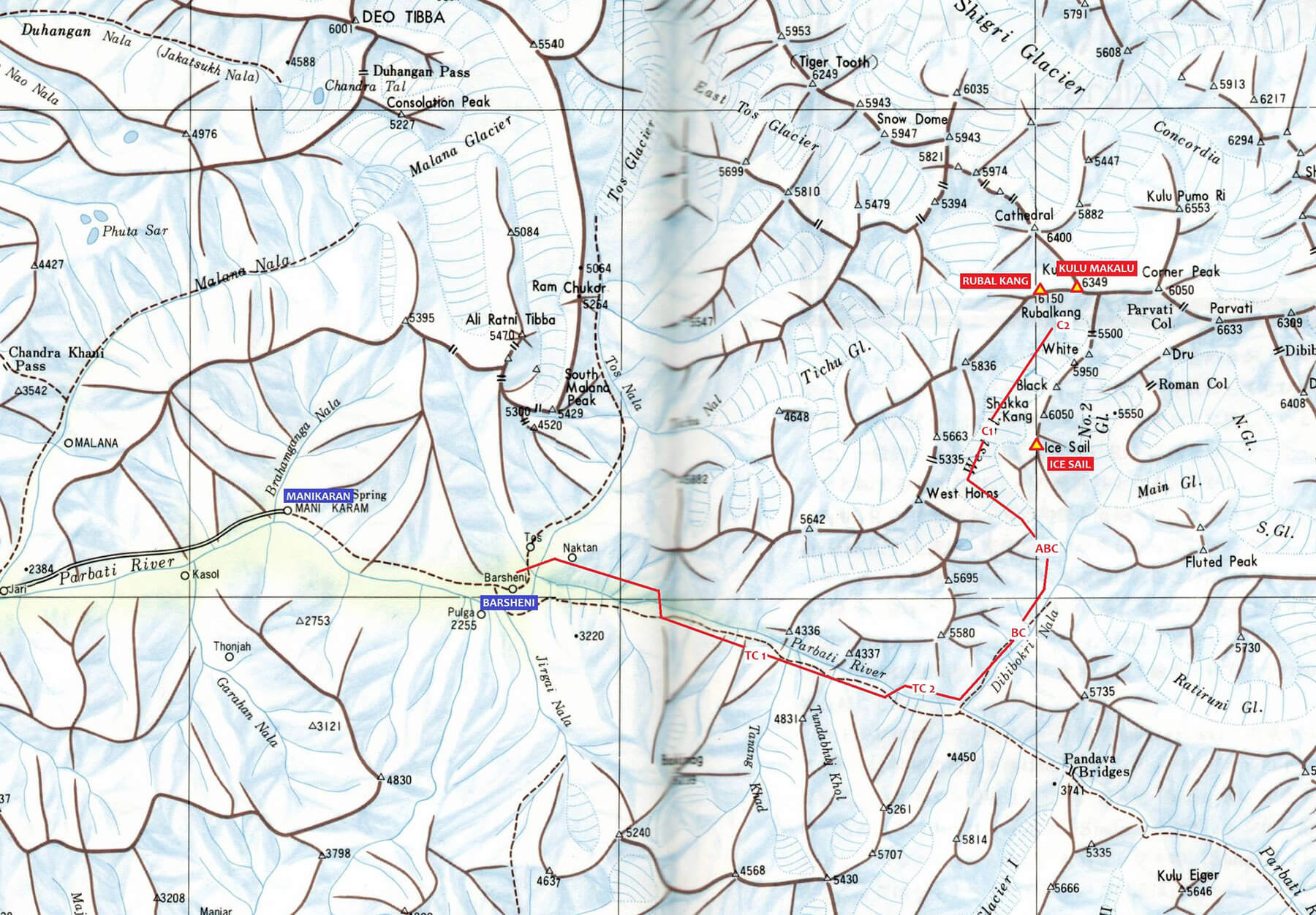
Approach Route Map
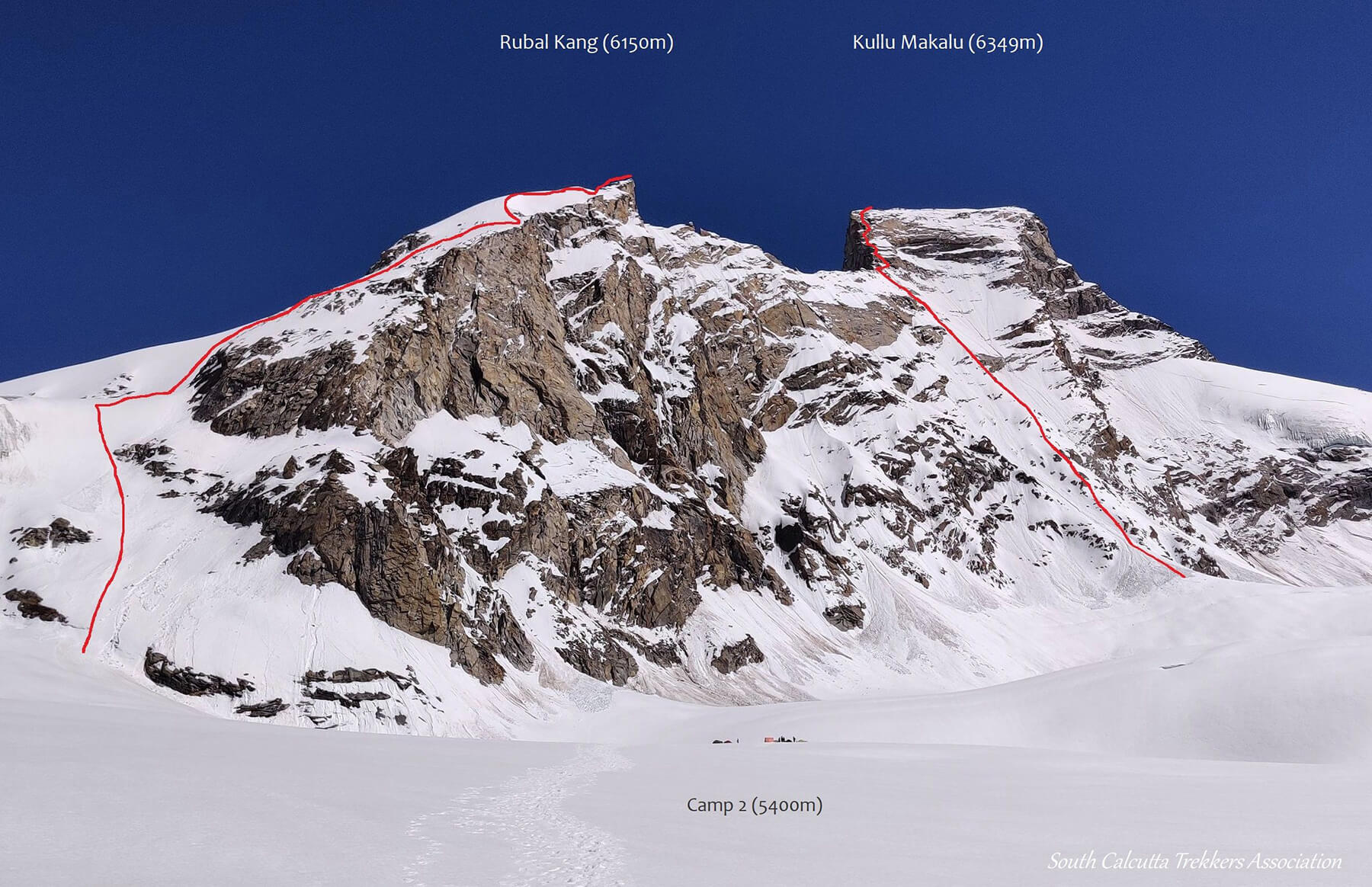
Climbing Route
Leader's expedition report
Seven members of SCTA; Rajsekhar Maity (Leader), Sayantan Dutta, Pradip Bar, Subhajit Banerjee, Abinash Jana, Barsha Joarder and Sansthita Chakrabarti left Kolkata on 9th June and reached the last roadhead in the Parvati valley – Barshaini, on 11th June. Phurba Sherpa along with Lopsang, Dawa and Bire Tamang joined the team at Kolkata. The team also included two support staffs: Narinder and Sonu of Jatoli village. A 5-day long approach brought them to the advanced Base Camp at the snout of West Dibibokri glacier at 4506 meters. Struggling over the huge volume of accumulated snow resulting from the unusual late snowfall, the team put 2 more high camps and moved to camp 2 (5400 meters), at the foot of Kullu Makalu and Rubal Kang by 21st June.
Kullu Makalu
On 23rd June, Rajsekhar and Pradip climbed up to 5750 meters along the lower section of Kullu Makalu’s South face and spent the night in an interim camp. Meanwhile Phurba and Sherpas climbed up to the col on the ridge connecting Rubal Kang with Kullu Makalu and fixed 4 coils (880 meters) of plastic ropes. They also made a detailed recce of the rocky summit wall which refused us from proceeding further the previous year. The approach through the rock section was studied and planned by the members thoroughly before the expedition, which gave Phurba and the Sherpa team a fair idea about the probable line of climb.
The next morning, 24th June, Phurba and Dawa started from C2 (5400m) at 1:00 AM and proceeded towards the col to find and open the route on the summit wall. Lopsang joined them from the interim camp. Rajsekhar, Pradip and Bire Tamang left the interim camp at 3:45 AM and started climbing up the face, inclining at around 70°, through ankle-deep snow. By 7:45 AM they covered 1400 feet of height and reached a point (6175m) above the col, and for the first time in 4 hrs found a little flat space to stand and rest for a while. It was clear sky till the previous night and 24th morning was little cloudy, but it cleared up later in the day.
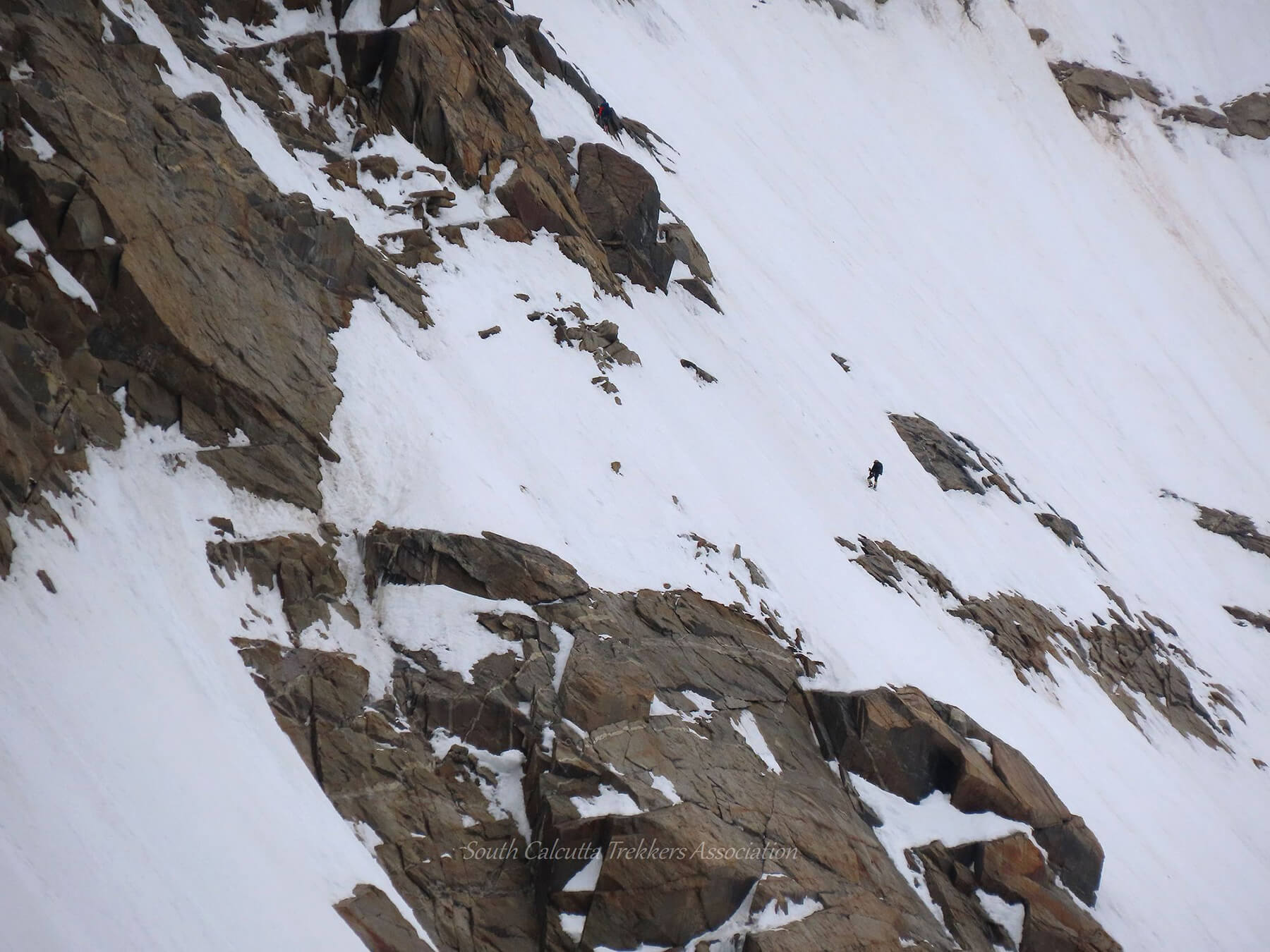
Climber on the South Face of Kullu Makalu
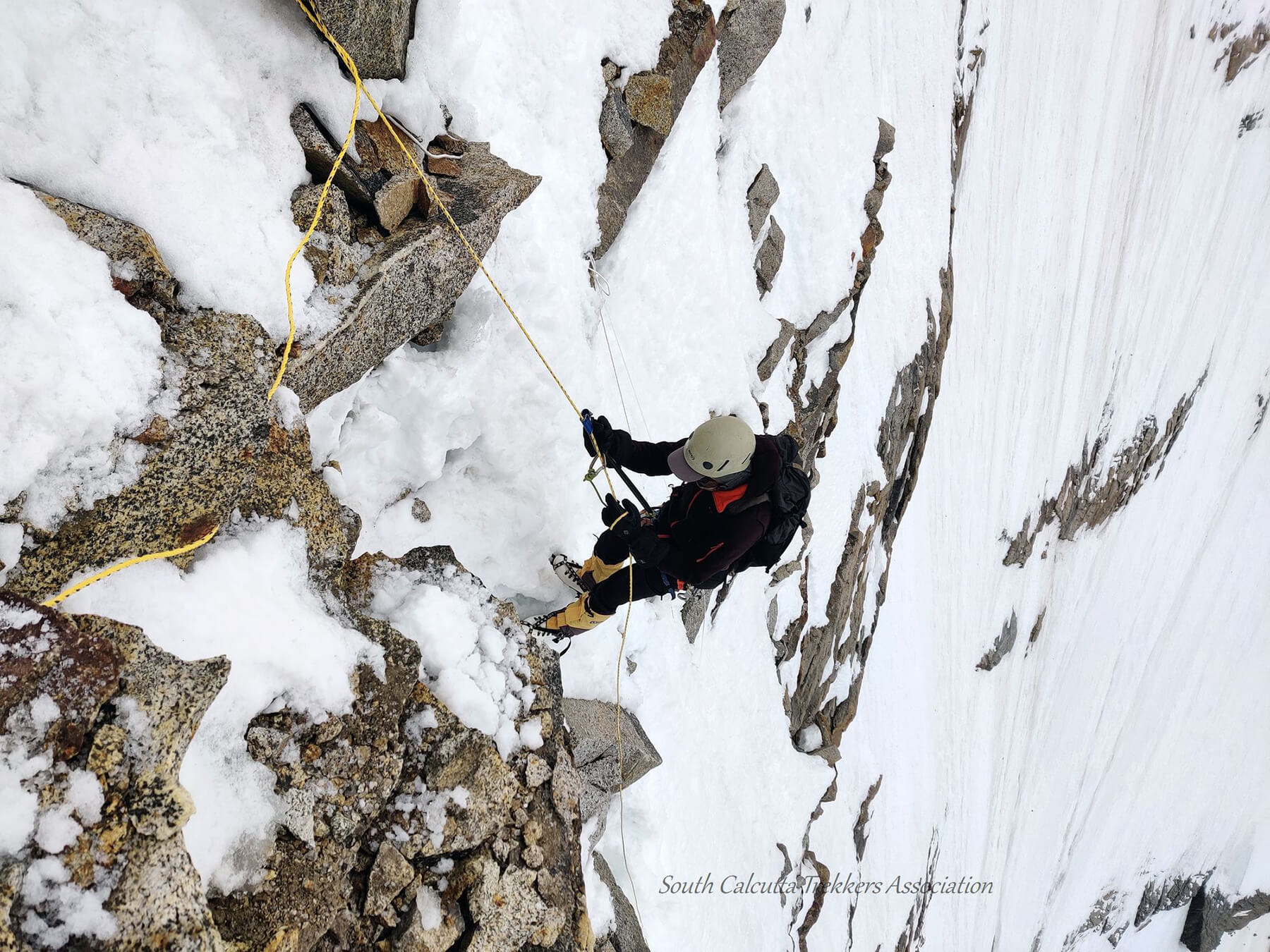
Upper section of the South Face of Kullu Makalu
The 175 meters (575 feet) high summit wall was mostly vertical with occasional overhangs at angles more than 110°. The 1st major difficulty was an overhang at a severe angle with extreme exposure. The rest of the climbing route along the SW arete of the summit wall passed through multiple long (40-50 ft) and small pitches (10-20 ft) of vertical rock sections and few overhangs in-between. The overhangs were small in height, 8-12 feet, but high in gradient (110°-120°). In total 350 meters static rope was fixed on the summit wall with various types of protection gears (16 rock pitons, 2 cams, 2 nuts, 2 hexes and 7 snow bars). 2 etriers were used by the Sherpas in opening the overhang sections. In approximately 4.5 hours Rajsekhar and Pradip climbed the entire height of the summit wall and put step on the summit of Kullu Makalu at 12:45 PM. The summit was a sort of a sharp borderline with a straight drop at its North, bordered with heavily formed cornices. The GPS device showed the reading of 6346 meters at the summit. Other than Tichu glacier at the North the team witnessed Bara Shigri glacier and the summit of Kullu Pumori at North-East, opposite side of the climbing route, which could only be seen from the summit of Kullu Makalu.
The team noticed only a single piton, a very old one, probably placed by the 1961 team, and surprisingly no other object from any previous expeditions were seen anywhere on the rock wall or on the summit.
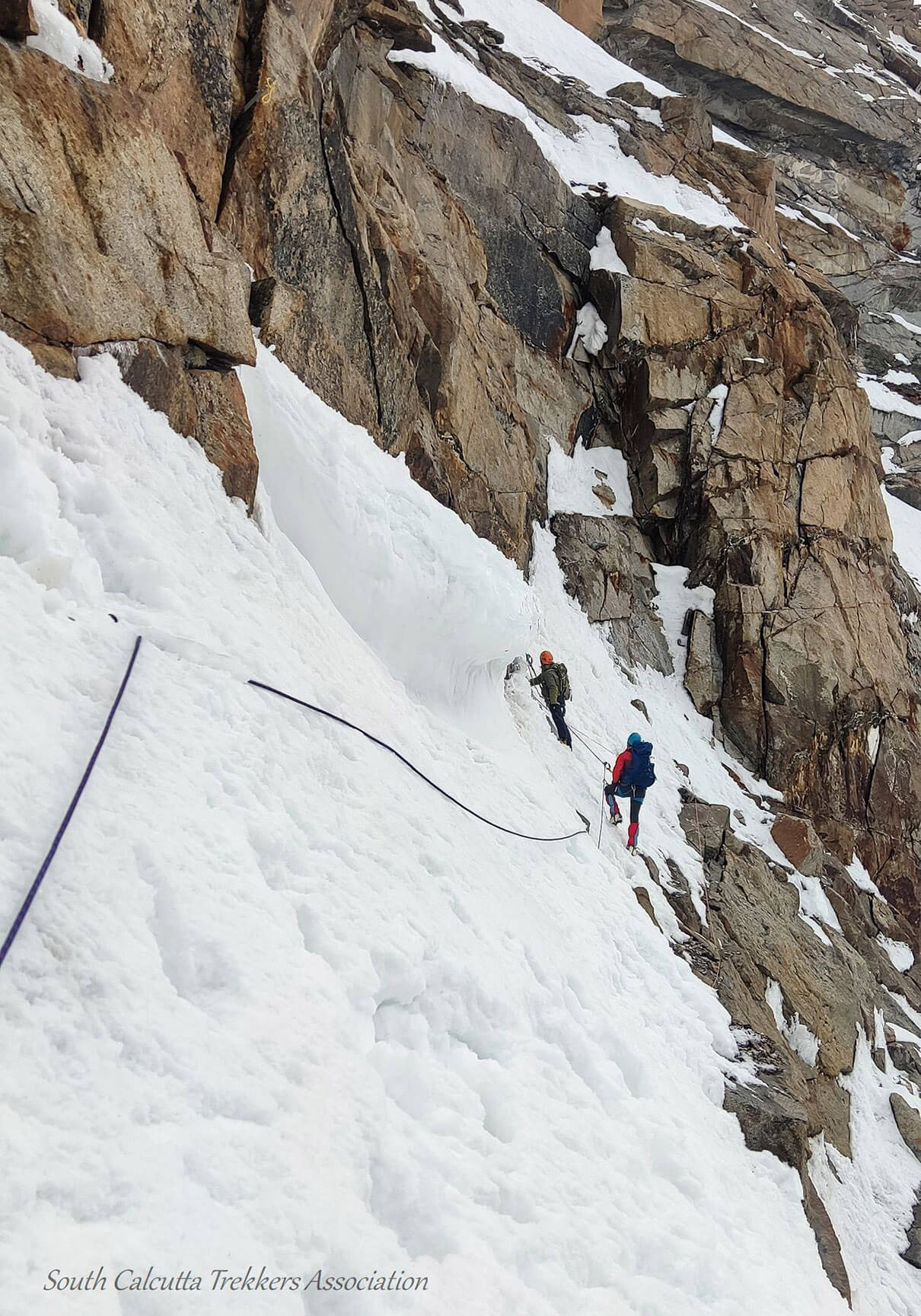
Start of the Summit Wall of Kullu Makalu
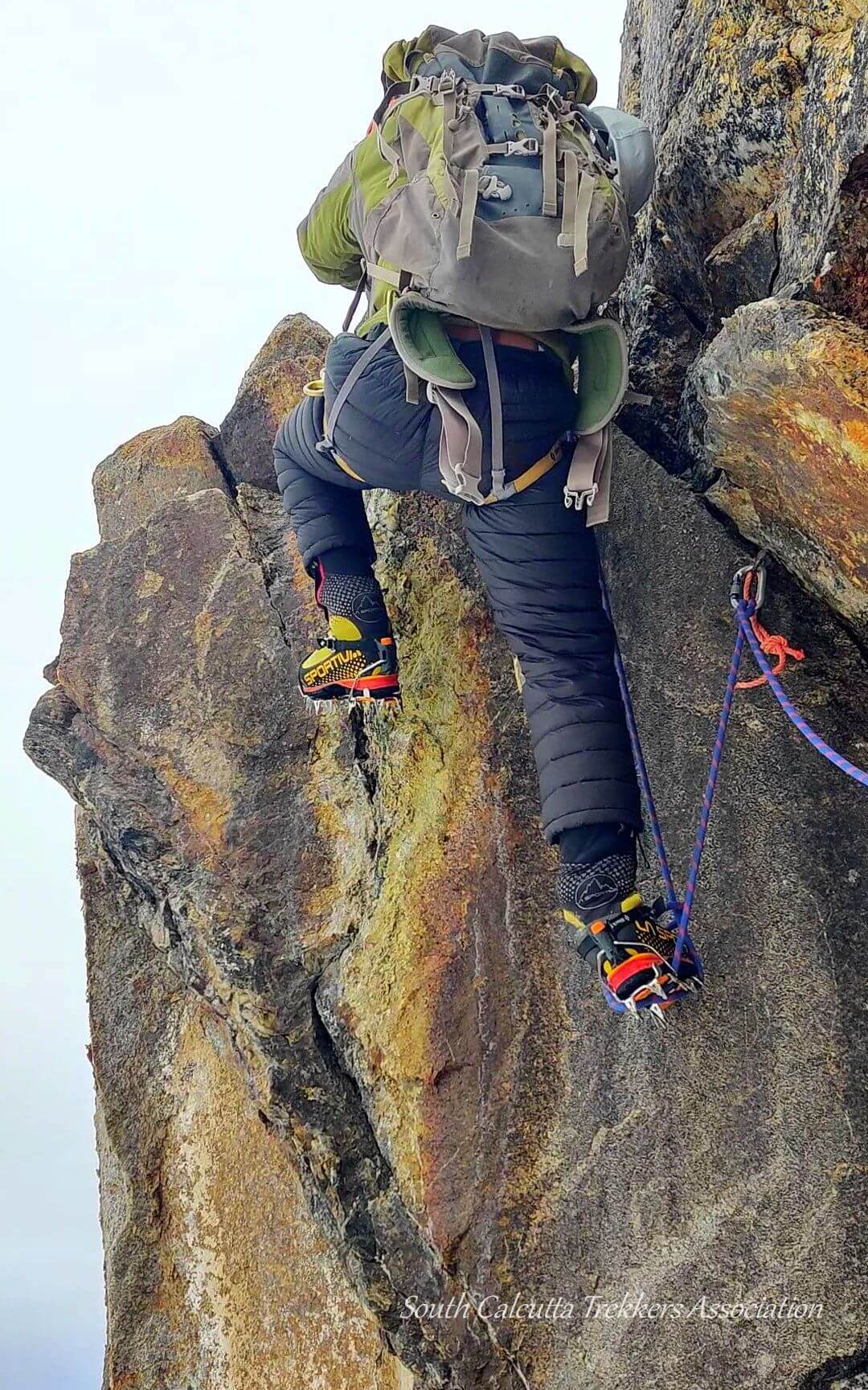
One of the many Overhangs on the Summit Wall of Kullu Makalu
Rubal Kang
Simultaneously, the rest of the team members were attempting Rubal Kang (6150m) in a single push from the glacier camp (C2, 5400m). On 23rd June at 1:00 AM, Sayantan, Subhajit, Abinash, Barsha and Sansthita along with Phurba, Dawa Sherpa and Sonu set off for the summit. They started with fixing a 100-meter rope on the 70° slope of the lower section of the peak’s South face and continued by retrieving and refixing the same rope till some point of the SW face. At higher slope the team roped up and climbed ahead. With strong sunlight the snow started melting very rapidly and the team was losing pace. At 5970 meters they decided to shorten the summit team which could move faster. Subhajit and Dawa carried on for the summit while rest of team turned around.
Reaching the top of the snow slope, Subhajit and Dawa found a large depression before the rocky summit pyramid. Avoiding the cornices hanging over the depression, by traversing to the right along a steeper section, they got to the summit pyramid. Negotiating the rocky section mostly by dry tooling Subhajit and Dawa reached the summit at 9:30 AM. From the summit they could see the SW face of Kullu Makalu and the col between the two peaks.
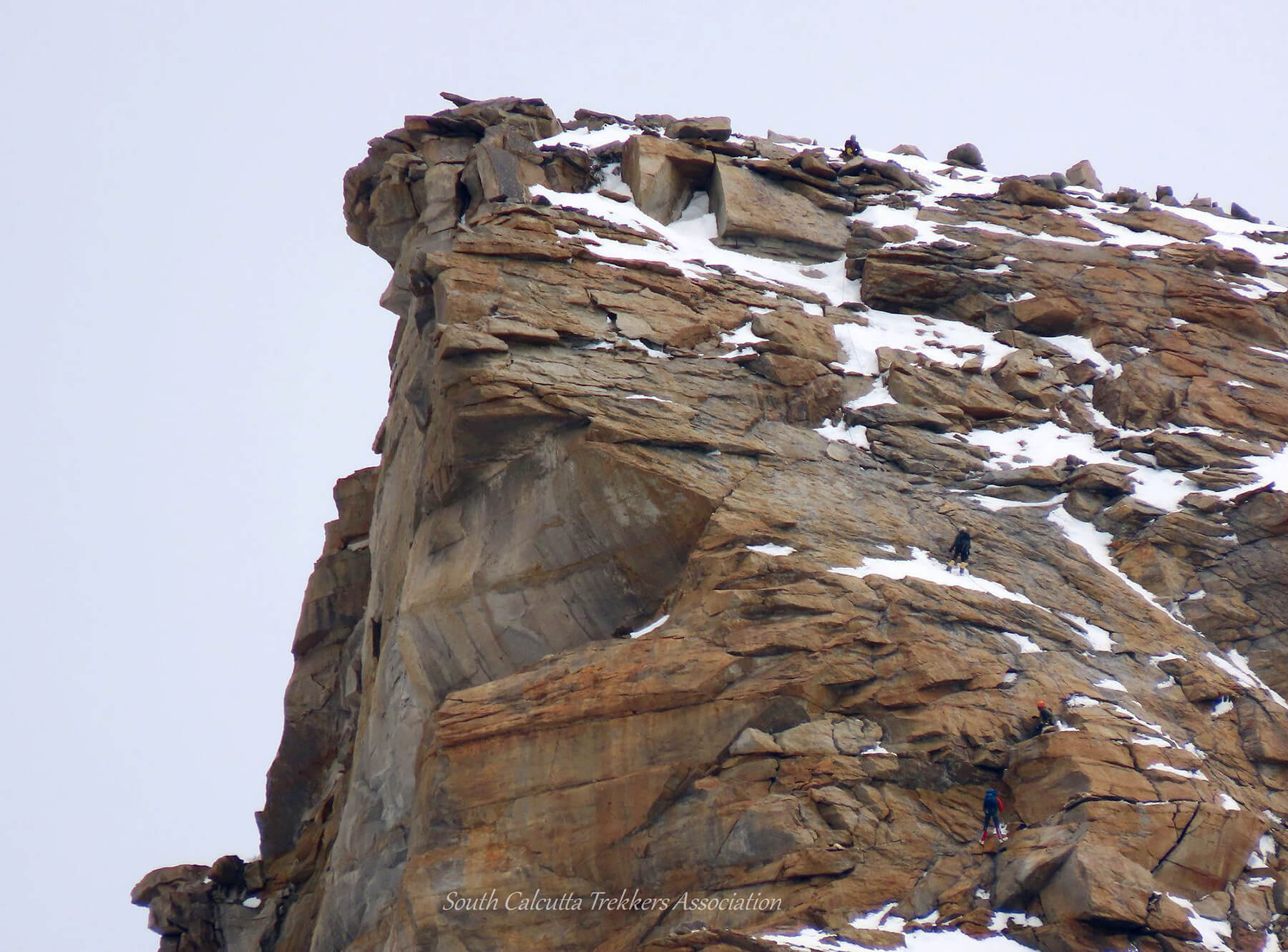
Last section of the Kullu Makalu Summit Wall near the Summit
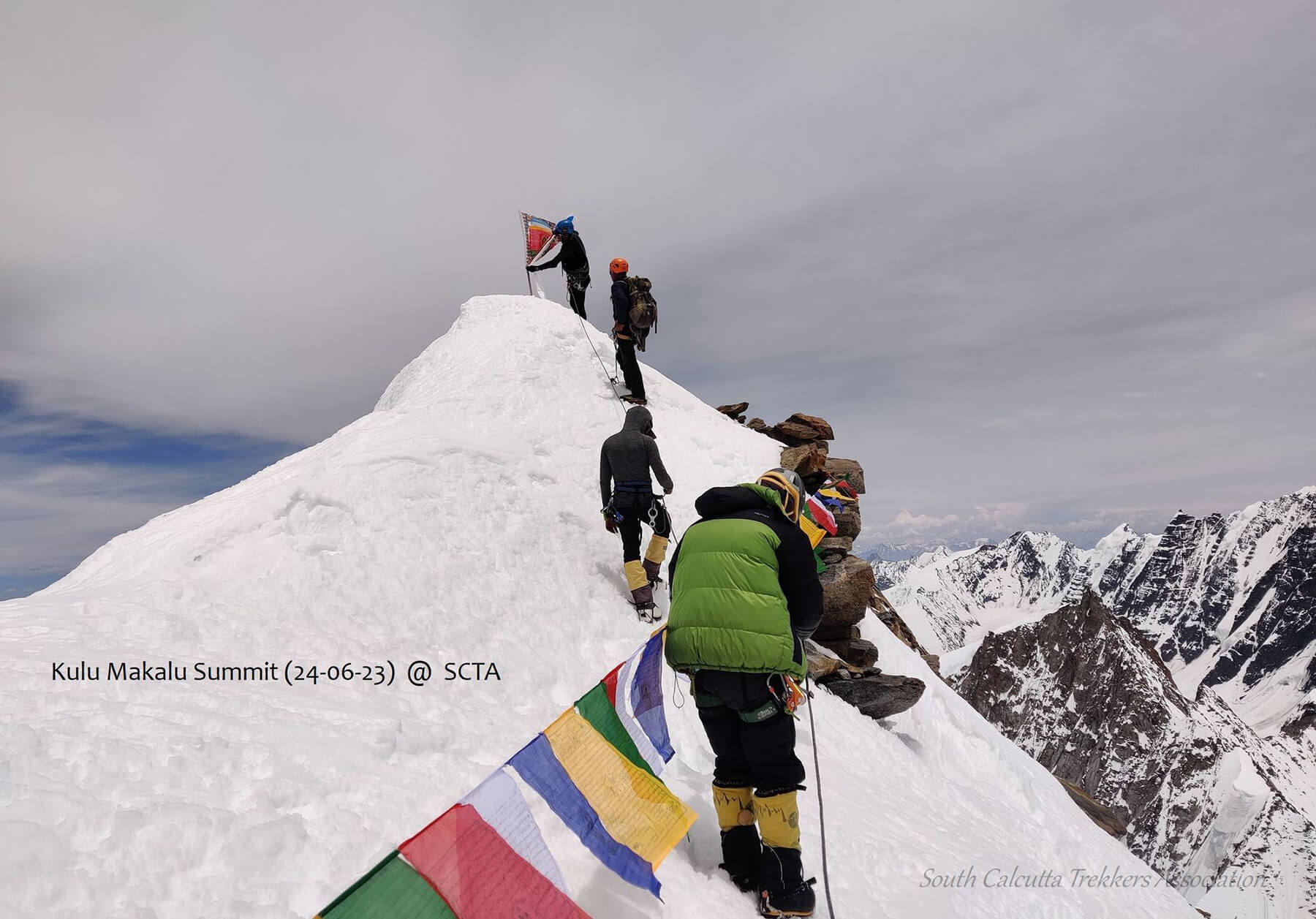
Kulu Makalu Summit Point
Summit Details
Kullu Makalu: Summited on 24th June 2023, at 12:45 PM by Rajsekhar Maity, Pradip Bar, Phurba Sherpa, Lopsang Sherpa, Dawa Sgerpa, Bire Tamang.
Rubal Kang: Summited on 23rd June 2023, at 9:30 AM, by Subhajit Banerjee and Dawa Sherpa.
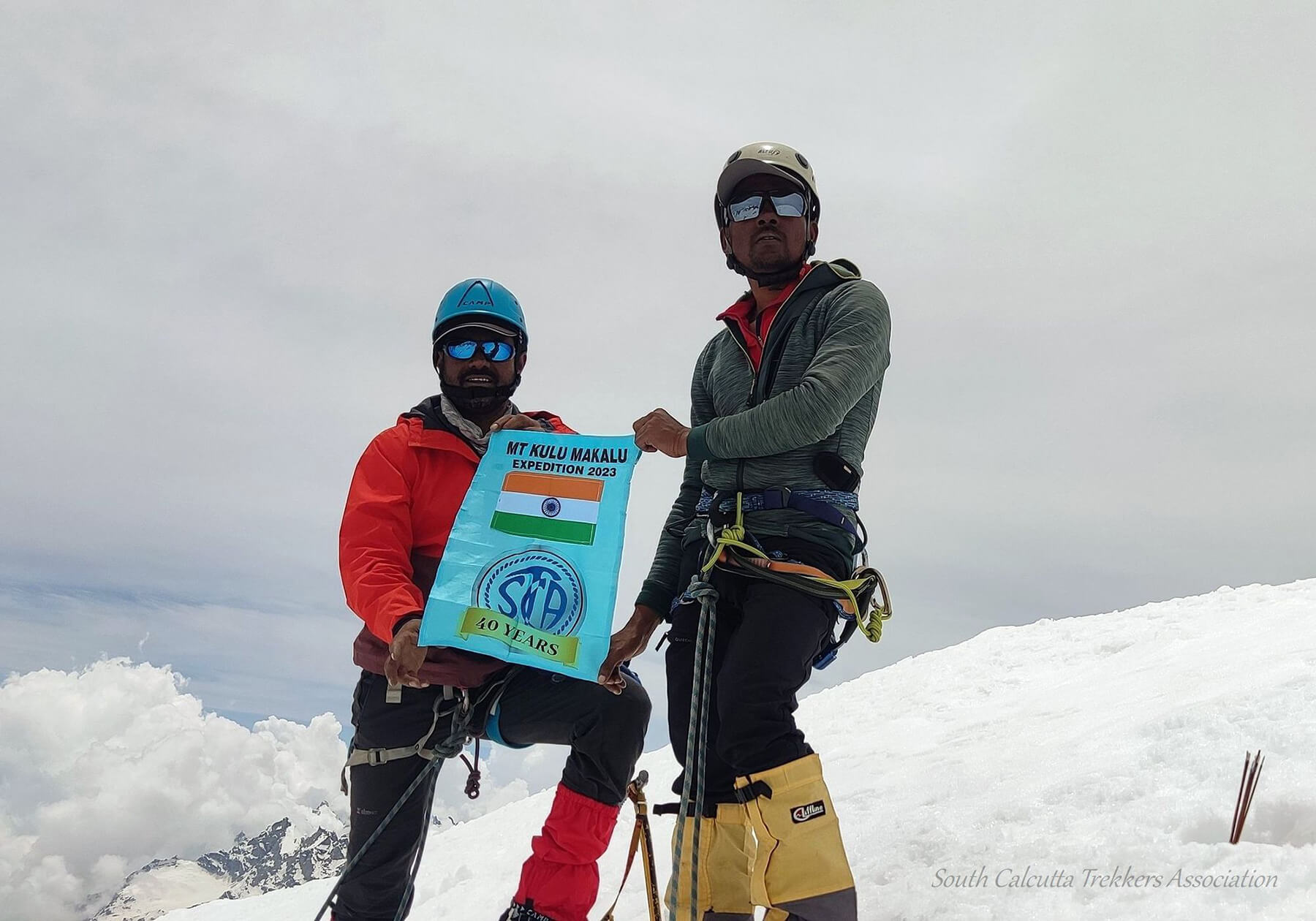
Rajsekhar & Pradip at Kulu Makalu Summit
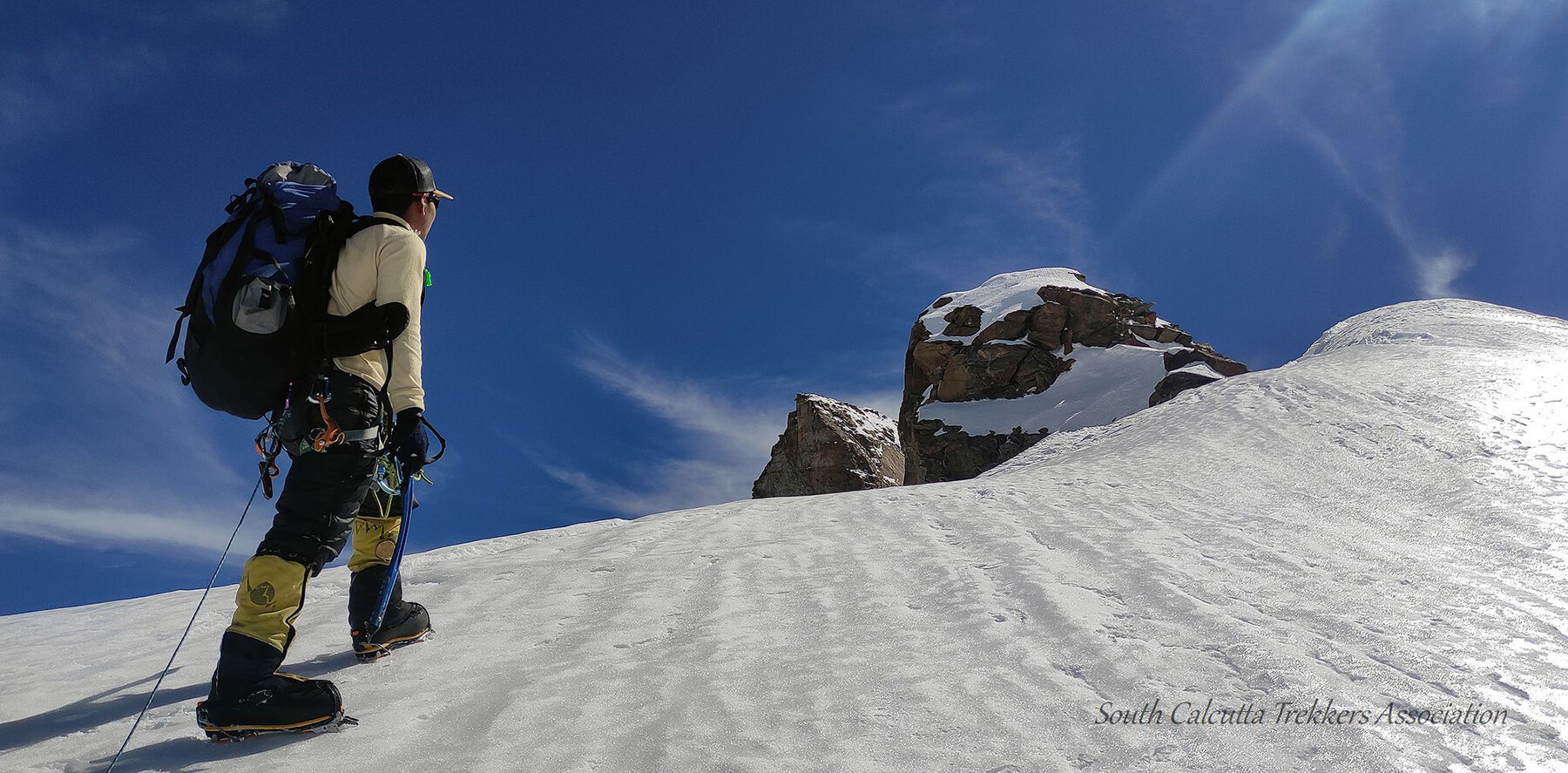
Summit Pyramid of Rubal Kang with Kull Makalu at background
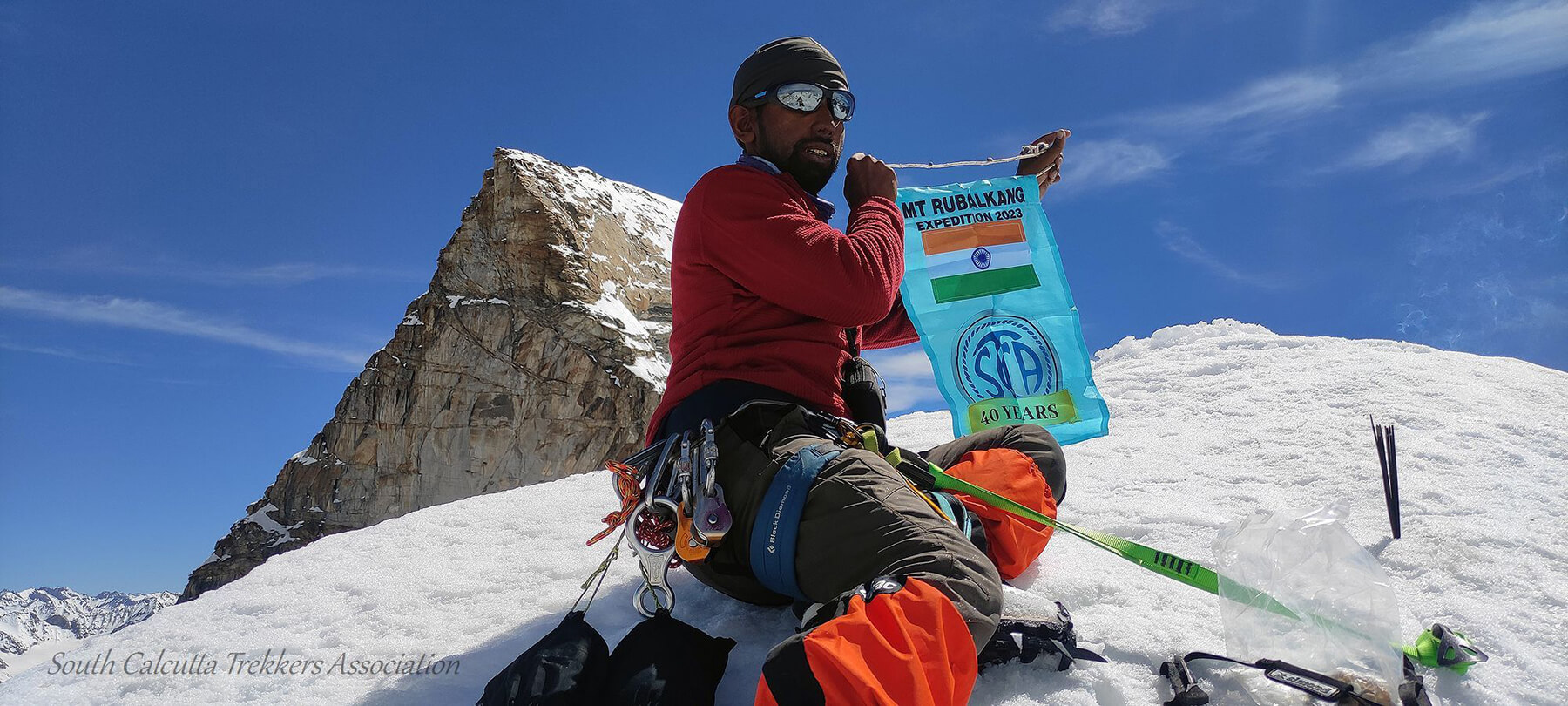
Subhajait at the Summit of Rubal Kang
Photo courtesy: Rajshekhar Maity






